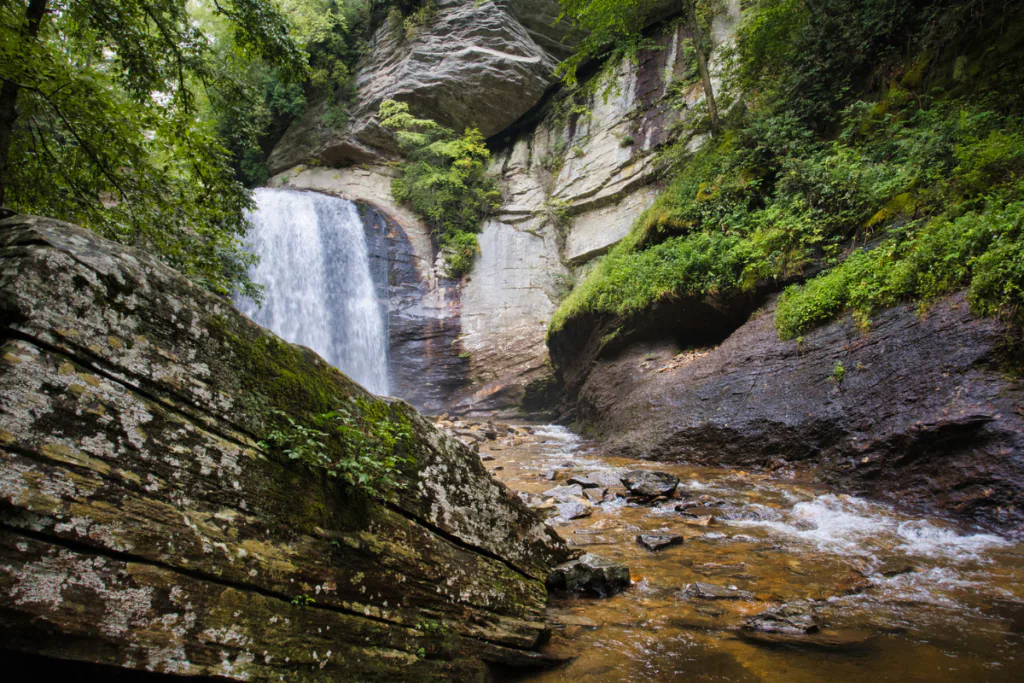Walking, fishing, boating in warmth, though often closer to home
| Correspondent
Looking back at spring 2020, tumultuous events — natural and man-made — wove in and out of our comforting, exciting and enriching outdoor life. By early May, temperatures hit the high 70s, opening buds and hatching out our first caterpillars. Cuckoos arrived to feed on them just as red trilliums blossomed.
Bored by indoor confinement, Americans went for walks on a grand scale, finding safety and comfort in the fresh air of their nearby outdoors. On sidewalks, country roads or forest trails, iPhone Apps like PictureThis and iNaturalist helped many to learn the names of plants, insects, reptiles, amphibians and other wildlife that they had unknowingly walked by before. The nature education required just a little curiosity and the taking of a photo.
Americans fished and boated more often and necessarily closer to home. While inviting warmth drew more of us outdoors, ants surviving the winter were drawn indoors, exploring countertops and floor board boundaries, looking for food and nesting places.
The once powerful and politically dominating National Rifle Association was struck by scandal and lack of funding from their canceled national convention and other collective events, and had to make massive cuts in staff and salaries. The NRA’s expected impact on the 2020 election plummeted as law suits and criticism of its leadership for outrageous personal spending accounts and million-dollar salaries drew heated rancor from inside their irreparably divided ranks.
Walkers briefly had free reign on unoccupied golf courses, which reopened with state approval on May 7. The golfers’ resurgence was soon interrupted by brutal weather.
On May 9, an abnormal, southerly bulge in the ever-more unstable jet stream ushered in a polar vortex carrying pummeling winds, record-cold and incongruous snow to the East. Mother’s Day was frigid.
On its other side, the polar vortex brought record-hot 100-degree temperatures to the West. The polar vortex — essentially a huge pocket of Arctic air — is normally confined to the North Pole region. But an extremely powerful low-pressure area to our south pulled it right down. As the Arctic has warmed — enough for temperatures to annually rise above freezing in midwinter — the stability of the polar vortex there is weakening and more easily shifting south where it can unnaturally descend on lower latitudes for extended periods to cause unnaturally bitter weather.
While the 40-pound stripers that Cape Cod Canal surfcasters had waited for all winter still hunkered in the vicinity of the warmer Hudson River region, faster-moving little schoolies already had reached the New Hampshire border. Fly fishermen not concerned with taking huge fish would have a banner season off our coast.
By May 11, gun shops that had been closed to slow the spread of COVID-19 were reopened after a legal challenge questioning their closure when liquor stores had been permitted to remain open.
By mid-May, charter boats and golf courses were back in operation, too, thanks to the effectiveness of masks and social distancing. Cherry and crab apple petals fell to grounds loaded with colorful violets and dandelions. Dogwoods bloomed, taking center stage in our flowering tree world. As forest canopies densely filled out and fields grew knee-high grass, pregnant white-tails bore their first fawns.
Hurricane season didn’t officially begin until June 1, but on May 18, the first tropical storm of the year prematurely brushed North Carolina. At the same time, record rains broke two dams in Michigan causing catastrophic flooding. The winds that kept our local fishing boats at the dock most of the winter continued to blow hard and relentlessly. More energy in our atmosphere from added heat was creating the potential for more extreme weather all year long.
By Memorial Day, as lilacs and wisteria lavished us in lavender, beach lovers flocked to the coast. Safety concerns for hotels and restaurants convinced most people to enjoy their outdoors closer to home. Cape Cod rental owners who feared a disastrous financial season, though, were happily surprised by a high demand for nearby ocean escapes.
Local farmers also saw an unexpected and much-needed boom in demand for products that could be directly sold to consumers. The majority of our state’s 200 dairy farms, on the other hand, because they rely on bulk buyers, continued to struggle. The lesson was clear: for everyone’s benefit, our dairy farmers need fairer compensation and more direct marketing to our consumers if the family farm as we’ve known it is going to be preserved. Home delivery of fresh milk from a few of those farms proved it.
May ended in gourmet style with delicious fiddleheads from ostrich ferns replacing asparagus on our wild tables. A few new foragers found to their regret, however, that similarly violin-shaped fronds of other fern species are indigestible.
This beautiful and normally mild month of lush rebirth ended uncomfortably with record-book tropical humidity more suited for the dog days of August. Boston Harbor’s previously exceptional flounder fishing that’s always dependent on cool waters quickly deteriorated. Typically, flounder move far out by the end of June. But the early heat wave caused their premature evacuation to deeper water.
More than a half million workers were unemployed in our state — and many more were forced to work from home. The new, massive quantity of leisure time caused overcrowding at popular fishing locations, both inland and on the coast. Finding a private spot to fish became difficult. Trout fishing, especially in recently stocked waters, reminded many of the April 15 opening days decades ago when shoulder-to-shoulder casting was the norm.
Sadly, the outdoor world lost 96-year-old Matt Smith, whom I long taught with at Auburn High. Matt was a conservation committee pillar, fly fisherman, student mentor, runner extraordinaire, and lover of native brook trout that he sought with religious fervor to catch, admire and release.
Fears of insufficient meat and egg supplies led many worried people to buy chicks to raise chickens. Some found that Cooper’s hawks, coyotes and foxes like chickens, too.
Quarantine time resulted in more care for lawns and gardens. Weeds were more meticulously eradicated. More time was given to landscaping, home improvement — and getting rid of junk.
With so many people staying home and venturing into nearby fields and forests, many baby and injured animals were brought to local wildlife rehabilitators.
June began unseasonably cold. Light frosts covered higher-elevation lawns and gardens. Trees dropping huge quantities of pollen brought lots of business to car washes and allergy specialists. By June 5, as our forests grew shady and their understory wildflowers had passed, high bush blueberries were green and plump, just like fruiting choke cherries and junipers. Tiny peaches were beginning to show patches of pink.
Wherever there was full sunlight, colorful wildflowers emerged. Blossoms of meadowsweet, hawkweed, fleabane, false Solomon’s seal, cinquefoil, blue toadflax, oxeye daisy, hawkbit, sheep laurel, dewberry, maple leaf viburnum, arrow wood, raspberry, blackberry and yellow paintbrush decorated the understory of lush powerlines and roadsides. Even poison ivy flowered prettily.
Fresh air never seemed so vital as restaurants and even town meetings went al fresco. Going outdoors — especially out to sea — provided safe sanctuary. But the ocean presented risks, too. Great white sharks lurked in ever increasing numbers off our beaches.
Lion’s mane jellyfish — some up to 8 feet wide and 80 feet long — began to show up in massive numbers off both our north and south shores, too. Their hundreds of tentacles, which normally stun and kill plankton and small fish, can sting and burn people — even when they wash up dead on the beach.
Toward Father’s Day, a long stretch of temperatures more suitable to South Carolina stifled our region. The deep, cool waters of Coxes Ledge proved a great haddock spot.
June ended with a massive dust cloud from Africa’s Sahara Desert drifting west across the Atlantic and over much of the United States. Record-high Arctic temperatures, as long predicted, soared to over a hundred degrees, melting permafrost, draining lakes and causing fires that emitted more carbon that would radiate around the globe.
On June 28, thunderstorms wracked the area. Communities received over a month’s precipitation within a matter of hours. Franklin was deluged with more than 6 inches in about 90 minutes. For the first time, the National Weather Service issued a flash-flood emergency during a non-tropical system.
The Appalachian Mountain Club had to close its eight trail huts for the year. The organization was financially clobbered. They were far from the only ones hurt by COVID-19.
—Contact Mark Blazis at markblazissafaris@gmail.com.
Credit: Source link






























